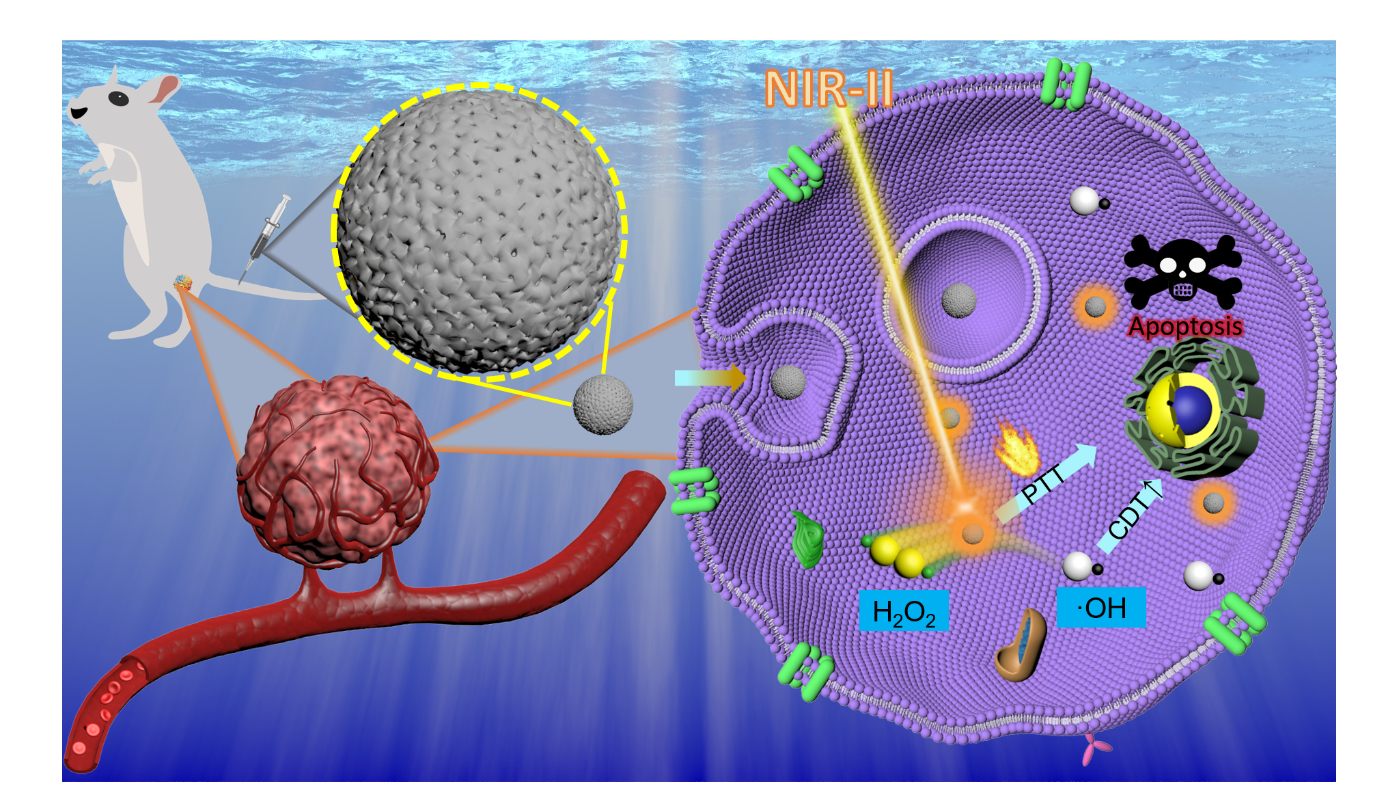
Recently, a collaborative research team led by Prof. WANG Hui and Prof. QIAN Junchao from the Hefei Institutes of Physical Science of the Chinese Academy of Sciences utilized the Stable High Magnetic Field Facility and successfully designed a catalytically active, photoresponsive Fe-doped carbon nanoparticles (FDCN) for the purpose of the second near infrared (NIR-II) photothermal-enhanced chemodynamic therapy.
The research has been published in ACS Applied Materials & Interfaces.
Carbon-based nanocatalysts-mediated chemodynamic therapy (CDT) has attracted significant attention in the field of tumor catalytic therapy. However, the suboptimal efficiency in catalyzing the generation of hydroxyl radicals (·OH) from hydrogen peroxide has posed limitations to its efficacy.
To solve this problem, the team introduced tiny amounts of iron to the carbon nanoparticles via a solvothermal method. This improved the treatment’s ability to produce the needed ·OH radicals without harming healthy cells. Additionally, they combined CDT with another treatment called photothermal therapy, which used light to generate heat. This heat speeds up the production of ·OH radicals, making the treatment even more effective.
The newly designed FDCN nanoparticles were thoroughly tested using advanced techniques, and the results were promising. These nanoparticles not only safely and effectively target cancer cells but also work well with NIR-II light, which helps in better treatment.
This innovation offers a new and improved approach to cancer treatment and opens up possibilities for using carbon-based nanomaterials in medicine, according to the team.

Illustration of the Tumor-Suppressing Mechanism of FDCN Nanozyme Synergy. (Image by WANG Xingyu)